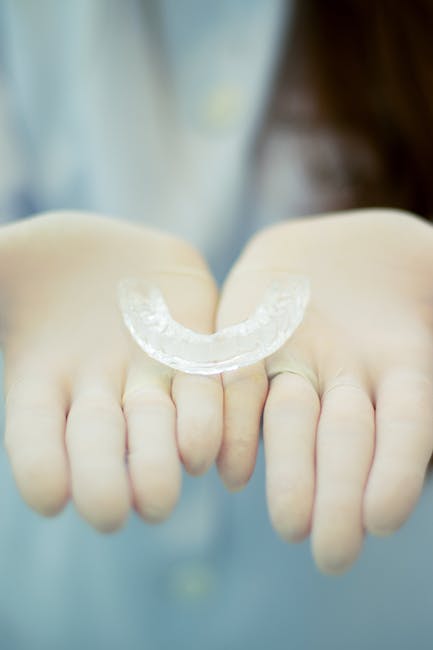How Long Can You Go Without Wearing Your Retainer

If you wear braces, you know that wearing a retainer is an important part of the braces process. Retainers help to keep your teeth in the correct position after your braces have been removed. But how long can you go without wearing your retainer? This article will discuss the importance of retainers and how long you can go without wearing them.The length of time you can go without wearing your retainer depends on several factors, such as how long you had braces, the type of orthodontic treatment you received, and your age. Generally, it is recommended that adults wear their retainers at least a few times per week for life, while children should wear them every day for at least 6 months after having braces removed. After that, they should continue to wear them as often as recommended by their orthodontist.
What Are The Risks of Not Wearing Your Retainer?
Not wearing your retainer can have a variety of consequences, which may include shifting teeth, overcrowding, and relapse of orthodontic treatment. If your teeth shift back to their original position after braces or Invisalign, the progress made with the original treatment could be lost. This could mean that you would need to undergo additional orthodontic treatment to fix the problem, which can be costly and time consuming.
In addition, not wearing your retainer could lead to overcrowding in the mouth. This can cause difficulty eating and speaking due to overcrowded teeth. Overcrowding can also make it more difficult to clean your teeth properly and lead to an increased risk of cavities or gum disease.
Finally, not wearing your retainer could lead to a relapse of your orthodontic treatment. If the retainer is not worn as directed by your dentist or orthodontist, then the teeth may start to shift back into their original positions. This could require additional treatment in order to correct the problem and restore the desired dental alignment.
Can You Wear Your Retainer at Night?
Wearing a retainer is important for maintaining the results of orthodontic treatment. Retainers are typically worn for a few years after braces have been removed, and it’s important to wear them as instructed by your orthodontist. One common question is whether it’s okay to wear retainers at night.
The answer is yes, you can wear your retainer at night. It’s actually recommended that you wear your retainer every night while you sleep in order to keep your teeth in alignment and prevent them from shifting back to their original positions. Wearing your retainer overnight helps ensure that the teeth stay in their current position and don’t move back into their original alignment.
It’s important to note that while wearing a retainer at night is generally safe, there are certain risks involved. For instance, if you don’t clean the retainer thoroughly before wearing it, it could harbor bacteria and cause gum irritation or infection. Also, if you accidentally swallow the retainer while sleeping, it could pose a choking hazard or even cause intestinal blockage.
It’s also important to follow the instructions provided by your orthodontist for how often and when to wear your retainer. Depending on the type of retainer you have, your orthodontist may recommend wearing it only at certain times of day or for specific lengths of time. In any case, make sure you check with your orthodontist before making any changes to your wearing schedule.
In summary, yes, you can wear your retainer at night as long as you follow all instructions given by your orthodontist and practice proper hygiene when handling and cleaning the device. Wearing retainers overnight will help ensure that teeth stay in their current positions and don’t move back into their original alignment.
Does Wearing Your Retainer Affect Speech?
Yes, wearing a retainer can affect speech. While the effect is usually temporary and minimal, it can take some time for your mouth to get used to speaking with a retainer in place. The retainer may cause a slight lisp or other minor speech impediment, as it changes the way your tongue rests in your mouth. This is especially true for those who are new to wearing retainers. However, this should improve with time and practice.
It is important to wear your retainer as prescribed by your orthodontist in order to prevent or correct any possible speech issues. Speak slowly and clearly when you first put on the retainer, and practice reading out loud to help adjust to speaking with the appliance in place. You may also ask your orthodontist for additional tips on speaking while wearing retainers. With enough practice, you should be able to speak normally while comfortably wearing the appliance.
What Happens If You Don’t Wear Your Retainer Enough?
Not wearing your retainer enough can have several negative consequences for your teeth. Without regular wear, your teeth may shift back to their original positions, undoing the progress made by the retainer. Teeth can also become crooked if they move out of alignment, which can cause a variety of problems with chewing and speaking. Orthodontists typically recommend wearing a retainer for at least a few hours per day for several years to ensure that the teeth stay in place.
Another potential consequence of not wearing your retainer enough is that it can start to fit poorly or become uncomfortable. When retainers are not worn according to instructions, they may become loose or warped, which could cause them to fit poorly and be uncomfortable. Wearing a poorly fitting retainer could even cause more shifting of the teeth, further complicating the situation.
In some cases, retainers that are not worn enough need to be replaced due to warping or other damage caused by poor care. Orthodontists often provide free replacements for retainers that are no longer usable due to lack of wear and tear; however, replacements may come with additional fees if there is significant damage or if you need multiple replacements over time.
Finally, it’s important to remember that retainers are an important part of maintaining healthy teeth and gums in the long term. Not wearing them regularly could lead to gum disease or other dental complications down the line due to improper alignment of the teeth and jaw. Wearing retainers as instructed by your orthodontist is critical for preventing long-term dental problems and keeping your smile looking its best!

Yes, it is possible to change the shape of your teeth without using a retainer. However, it is important to note that the results may vary depending on the person and their oral health. Orthodontists often recommend retainers for long-term results, but there are other ways in which you can temporarily reshape your teeth without using a retainer.
One way to change the shape of your teeth without a retainer is through bonding. Bonding involves the use of a composite resin material that is applied directly to the teeth in order to improve their appearance. The resin material can be used to fill in gaps between teeth, make them appear straighter, or even change the color of your teeth. Bonding typically lasts for up to five years and is generally considered a safe and effective way to alter the shape of your teeth.
Another way to reshape your teeth without a retainer is through veneers. Veneers are thin shells made out of porcelain or composite material that are affixed to the front surface of your tooth in order to make them appear straighter or brighter. Veneers typically last for up to 10 years and can be used to cover chips or discoloration on your tooth’s enamel. However, veneers can be quite expensive and require multiple visits with an orthodontist.
Finally, you can use braces as an alternative way to reshape your teeth without using a retainer. Braces involve metal brackets and wires that are attached onto your tooth in order to correct their alignment over time. This process requires frequent visits with an orthodontist over several months or even years, depending on the severity of misalignment. Braces are often seen as an effective way for permanently changing the shape of your teeth, however they tend to be more expensive than other alternatives.
In conclusion, it is possible to change the shape of your teeth without using a retainer. While retainers may provide better long-term results, there are other solutions such as bonding, veneers and braces that may offer temporary relief from misalignment issues or discoloration on your enamel. It is important to consult with an orthodontist before embarking on any treatment plan in order to get advice tailored specifically for you and ensure that you get the best possible results.
What Are The Benefits of Wearing A Retainer?
Retainers are an essential part of the orthodontic treatment process that helps to keep teeth aligned and prevent them from shifting back to their original position. Wearing a retainer can provide many benefits, including:
Improved Oral Health
Retainers help to maintain the position of your teeth and can help to reduce the risk of cavities, gum disease and other oral health issues. Proper alignment of your teeth can also make brushing and flossing easier, thus leading to improved oral hygiene.
Improved Appearance
Wearing a retainer can improve the appearance of your teeth by helping them stay in their desired alignment. This can lead to a more aesthetically pleasing smile and improved self-confidence.
Preventing Relapse
Most orthodontic treatments take time and effort to be successful. Wearing a retainer after treatment is completed helps prevent teeth from shifting back into their original positions. This ensures that all the hard work put into achieving straight teeth is not undone.
In conclusion, wearing a retainer has many benefits that can improve your oral health, appearance, and overall confidence. It’s important to follow your orthodontist’s instructions regarding wearing your retainer in order for it to be effective.
How Long Does It Take to Adjust to Wearing A Retainer?
Adjusting to wearing a retainer is a gradual process that can take some time. It is important to understand that everyone’s adjustment period will be different and there is no “one size fits all” answer. Generally speaking, it can take anywhere from 4-6 weeks for the wearer to get comfortable with the retainer in their mouth. During this time, it is normal for the wearer to experience some minor discomfort or pressure as the retainer fits more securely into place. It is also common for people to experience some difficulty speaking and eating while getting used to their retainer.
During this adjustment period, it is important to keep up with regular wear and care instructions provided by your orthodontist. This means wearing your retainer as instructed (generally full-time for the first couple of weeks) and cleaning it regularly with a soft toothbrush and toothpaste. Your orthodontist may also recommend using a denture cleaner or soaking solution to help keep your retainer free of bacteria and odor-causing debris. Additionally, you should avoid drinking any sugary beverages while wearing your retainer as these can cause plaque buildup over time.
If you find yourself struggling with adjusting to your new retainer, talk to your orthodontist about ways you can make the transition easier. They may suggest changing the fit of your retainer or providing additional wear instructions in order to help you adjust more quickly. With patience and persistence, you should be able to adjust to wearing a retainer in no time!

Conclusion
It is important to wear your retainer as directed by your orthodontist. Neglecting to wear your retainer can result in relapse of teeth movement and cause you to need more complicated and expensive treatments. While the amount of time you can go without wearing your retainer can vary depending on the type of braces you had, it’s generally recommended that you wear it for at least two years after getting them removed. It’s also a good idea to wear your retainer at least once a week for the rest of your life to maintain straight teeth.
Ultimately, it’s best to follow the advice of your orthodontist when it comes to wearing a retainer. Talk to them about how long they suggest you wear yours and create a plan that works best for you. With proper care and maintenance, you can ensure that your teeth stay straight for years to come!
